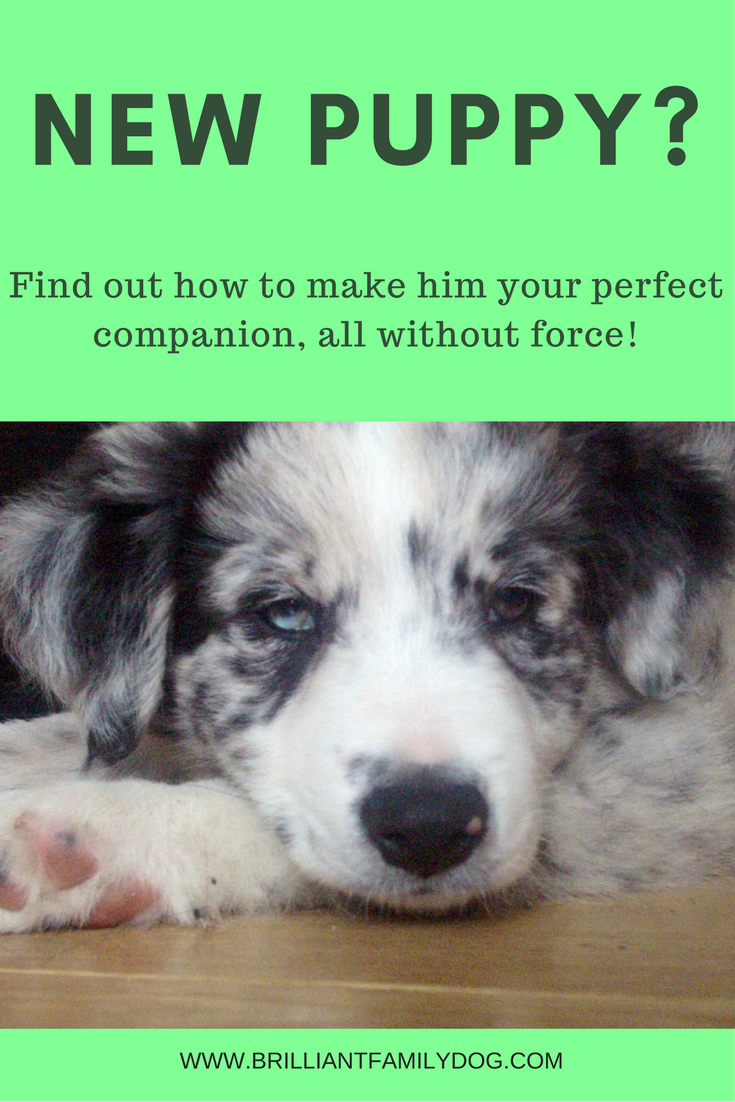Lizzie had recently retired from a responsible position.
She lived in a spotless and perfectly-kept home in the countryside with a husband who was always out at work. She wanted a dog for companionship and pleasant country walks.
Her children were long grown so it was a good while since she’d had a young thing to look after.
So the advent of her puppy Bracken brought up all kinds of fears and anxieties in Lizzie - she was terrified something dreadful would happen to him, but she also struggled with the disruption a puppy brought to a neat, clean, adults-only, house.
At Puppy Class, Bracken was distracted and lively - typical of his busy and active breed - not, perhaps, the best choice for a first-time dog-owner of later years.
Lizzie got very anxious and embarrassed by his behaviour at class.
THIS FREE ECOURSE IS A BONUS FOR YOU WHEN YOU SIGN UP TO RECEIVE EDUCATIONAL EMAILS AND OCCASIONAL OFFERS FROM ME. YOU CAN UNSUBSCRIBE AT ANY TIME.
Privacy Policy
She felt ashamed that she couldn’t “control” this puppy, and felt he was showing her up.
She was perplexed that her image of the perfect dog trotting at her heels across hill and dale was not matched by the reality of a puppy who seemed to be always straining to get as far away from her as possible!
So I wasn’t surprised when Lizzie got in touch with me a couple of months after her Puppy Course finished to give me a long list of problems she was having with Bracken, and to ask for help.
Enter the prison!
When I arrived at her home I found something more akin to a prison! I was ushered through an airlock of two doors at the front door (a good practice in itself) to see an excited puppy leaping up at a baby gate. Bracken was not learning how to greet people stuck behind a gate!
She had four metal playpens barricading various rooms and corridors. She had baby gates in most of the doorways - this in addition to a couple of crates. And outside she had had fencing built round the patio to prevent Bracken’s access to the garden.
The house itself was spotless, with no sign of Bracken’s toys which had all been put away.
Her focus was entirely on containing and controlling her eager youngster.
Her list of problems included:
Bracken was not yet reliably housetrained
He’d grab anything he could find in the house and initiate a chase game
Outside he’d get hold of stones and slugs, which Lizzie frantically tried to get off him
This was leading to a Resource Guarding problem
He’d steal any food so everything was locked away
He’d race off to any dog he saw on walks, play too roughly, and refuse to come back
The Program
This is what made Lizzie happy!
I revised with Lizzie the games she’d learnt in Puppy Class - which had all been forgotten in the new clampdown era
I taught her new games - particularly for focus and recall - to show her that Bracken could keep his feet on the floor and engage intelligently with her
We played fast games so Bracken could learn to respond even while highly excited
Housetraining - we went back to new puppy basics
She revised her matwork with Bracken so he could reliably go to his mat when asked - and stay there till released
She learned to swap, not to snatch or chase. This stopped the stealing and the resource guarding, and dealt with the potentially dangerous slug ingestion
Lizzie learned to stop caring about stolen items so that grabbing stones was no longer the prompt for a chase game for Bracken, so it just died out on its own
She improved Bracken’s diet, going for a grain-free option
She learned how to handle a long line with soft hands so she could give Bracken comparative freedom without getting too anxious herself
She got a Freedom Harness for control without coercion
These both improved her Loose Lead Walking dramatically
We worked on a system for greeting dogs and people with self-control
She polished up her Tug play from class so that it incorporated masses of impulse control along with masses of high energy fun
She did some work using Dr. Overall’s Relaxation Protocol to teach Bracken to self-soothe and settle
And she started to use impulse control at every opportunity - every time she opened the fridge, every time she opened a door, picked up a toy or Bracken’s lead
The result
Over the course of a month - with much reassurance that Yes, Lizzie was an excellent owner for Bracken, and Yes, she could look after him well and give him what he needed, and Yes, he would become her perfect companion over time - all the playpens, fences, and gates disappeared.
She became able to walk him on a loose lead instead of the vice-like grip on a tight lead she had before, and she was able to let him loose on walks without panicking that he’d escape (or even want to escape).
She had entirely stopped chasing Bracken for stolen items, with the result that he no longer bothered to steal them - he’d much rather have the offered game instead.
Housetraining? “Oh yes, he’s fine now!”
The Conclusion
Bracken was a grand little pup who was being wound up on a daily basis with constant nagging, recriminations, and control.
He was simply exhibiting puppy and early adolescent behaviours which provoked a huge over-reaction in Lizzie, owing to her anxiety that she was somehow failing the dog.
Once Lizzie learnt how to relax and release - and to stop worrying herself into a panic - everything started to run smoothly.
By relinquishing control and instead giving Bracken choices, she elicited really good responsive behaviour from him.
It was a delight for me to see that both Lizzie and Bracken felt free to trust and enjoy each other. The journey could now begin!









